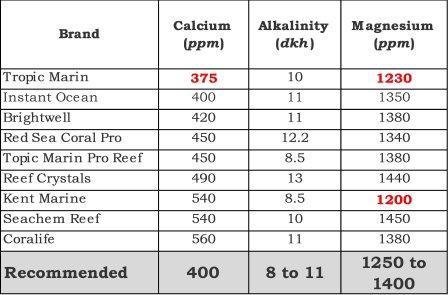So for the last...oh... 6 or 7 months, I have been having random corals die off. usually only 1 at a time. sometimes 2. it started with 2 montis. They were growing like weeds then poof. RTN... then a few acros here a and there. Everything else in the tank will be doing extremely well. Even the piece in question will be doing very very well up until D day. I have chased pests, I've chased chemistry. Everytime I see a piece showing the slightest signs of tissue necrosis I pull it and inspect it very closely for any pests. I couldn't ever see any pests on the corals. I would give them a quick dip and put them into QT. I did have a small flatworm issue back in jan-feb. They didnt appear to be AEFW. they were small brownish worms that would mostly stay on the glass. However after loosing a couple pieces I decided screw the worms, and went full on attack at them with flatworm exit and lots of water changes. Again I still havent seen any pests on said corals after removing and inspecting or dipping. So I moved on to chemistry. This tank DRINKS alk. I was having trouble staying on top of it and with my PH in question, I started using KALK as my top off water. I was going through a 35g trash can of kalk about every 2 weeks and my alk was still dropping. Calcium and magnesium would hold steady. Nitrates, phosphates, ammonia everything is in check and in the green. Calcium holds steady at 420-480 magnesium 1250-1400. I was aiming to hold my alk at 8dkh. so after I started loosing my meteor shower cyphastrea (i have a thread in the LPS section about that one) I started manually dosing alk and measuring 2-3 times a day and checking my calcium and mag to make sure everything was in check. Its taking a lot of additive but the alk is staying about 8dkh. Today for the first time I noticed my Deep water acro was going, and it seems to be going fast. The meteor shower is almost completely gone. I dont know if i should try and cut it and salvage the little bit thats left or just pray. Then I also noticed my Bling Bling Cyphastrea that was doing very well is almost gone as well, seemingly our of now where. everything else seems to be holding steady or doing very well except for a couple of pieces. My giant plate of miami hurricanes chalice had started receding a few months back and is continuing its shrinkage. I also have a crazy rainbow monit that seems to be growing and then dying at the same time. For every bit of new growth outward, it seems to be dying from the middle outwards. I also noticed today a few "burnt" looking tips on one of my acros and my birds of paradise. Here is an album of the pieces currently on their way out, some that have been long gone and some that are doing extremely well...
http://imgur.com/a/l2NPr
salinity 1.026
Ammonia 0ppm
Nitrites 0ppm
Nitrates 0ppm
Phosphates - undetectable
Calcium 480ppm
Magnesium 1420ppm
Alk 8.2dkh
and triton results

http://imgur.com/a/l2NPr
salinity 1.026
Ammonia 0ppm
Nitrites 0ppm
Nitrates 0ppm
Phosphates - undetectable
Calcium 480ppm
Magnesium 1420ppm
Alk 8.2dkh
and triton results



